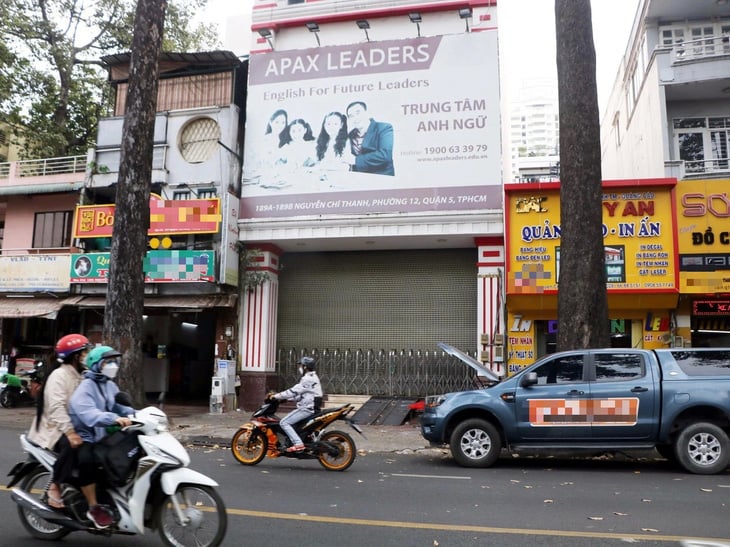
According to Apax Leaders, the Ho Chi Minh City Department of Education and Training said that the tuition fee that this unit must refund to parents is 108.1 billion VND, of which 14.3 billion VND has been paid, and the remaining debt is about 93.8 billion VND - Photo: TRONG NHAN
He said his family spared no expense in investing in English for their two children, choosing two full tuition packages of 112 million VND (250 sessions) and 25.6 million VND (96 sessions).
Less than three months later, the center closed, and Mr. P. went from taking his child to Apax to... collecting money. What is worrying is that this trend of parents collecting debts is becoming more and more common.
There are all kinds of debt collection. There was a woman in Binh Thanh who paid more than 80 million VND for a full IELTS course, and was guaranteed that her child would get IELTS 7.0, but then wanted to withdraw the money because she found the center's teaching to be messy.
About 5 groups of parents are facing financial difficulties, want to withdraw and ask the international school to refund the tuition fees paid in advance. Most recently, there are groups of parents in the bankruptcy case of Apax Leaders and American International School Vietnam (AISVN)...
It can be seen that in any transaction related to tuition fees at private schools, parents and students are still the "left-handed" parties due to legal loopholes.
Decree 81 of the Government currently stipulates that tuition fees must be collected monthly, but many private educational institutions are turning tuition fees into "educational investment packages", "companionship contracts", "capital contribution contracts"...
With this form, parents pay the school several hundred million to several billion to "invest" or "contribute capital", in return their children will be able to study for free or with reduced fees, sometimes for 12 years.
Many schools say this is a civil transaction, with the parties agreeing voluntarily. Is it okay that this is also a form of capital mobilization? Looking at real estate projects, capital mobilization must comply with the regulatory framework. As for "educational investment" packages - essentially a way for schools to mobilize capital - there are almost no regulations.
Meanwhile, the scale of educational investment packages is also very large: if an international school has 1,000 students, if only 1/5, or 200 people, participate in the educational investment package, each package is about 5 billion VND, the school has mobilized 1,000 billion VND. At this rate, it is easy for the school to fall into the situation of "catching a thief with bare hands" and causing consequences.
The second gap is managing the risks that arise if a private educational institution becomes insolvent. If a private secondary school operates like a business, it can declare bankruptcy or cease operations.
However, general education is different from other types of business because it requires stability and continuity. However, the current Education Law and general school regulations do not have any provisions on the case of schools going bankrupt or losing the ability to operate.
That is why when AISVN International School is temporarily closed and students are "uneducated", the authorities are somewhat confused and have no legal corridor to intervene.
The most feasible thing that the HCM City Department of Education and Training is doing is to persuade other schools to accept transfer students if there is a need.
Finally, the loophole lies in the inspection and accreditation process. An English center or a private high school is theoretically regularly inspected by authorities or accredited by independent organizations.
In the event that an educational institution faces a major crisis, are the inspection agencies or accreditation bodies innocent?
In Singapore, independent accreditation bodies are very effective, constantly assessing the performance of private educational institutions, so parents can always know about potential risks early.
Socializing education is a correct policy, reducing pressure on the public school system, diversifying choices for students and creating more resources for educational development.
However, recent school bankruptcy cases show that the State's participation in management is still needed through establishing frameworks and institutions to bind investors' responsibilities and protect parents' interests.
Above all, the State's legal framework will ensure students' right to education, regardless of public or private school, regardless of form of education.
Source
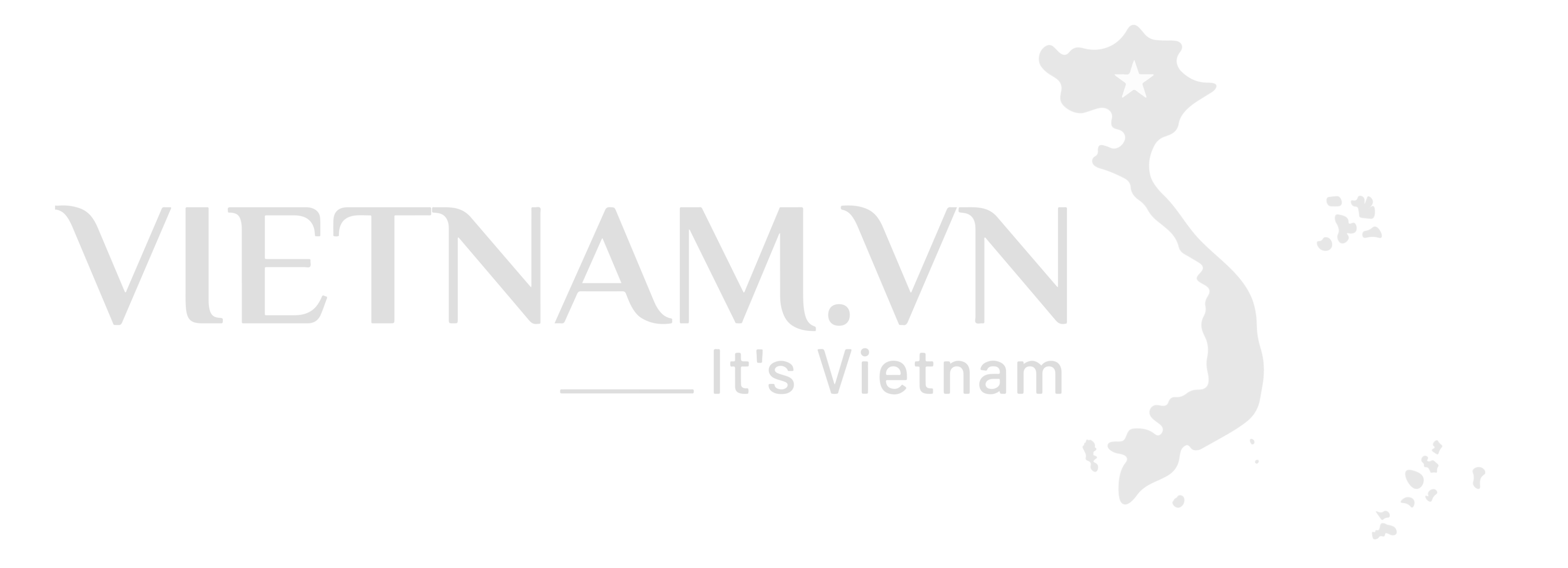


![[Photo] General Secretary To Lam receives Assistant to the President of Russia, Chairman of the Federal Maritime Council of Russia Nicolai Patrushev](https://vphoto.vietnam.vn/thumb/1200x675/vietnam/resource/IMAGE/2025/9/16/813bd944b92d4b14b04b6f9e2ef4109b)

![[Photo] National conference to disseminate and implement 4 Resolutions of the Politburo](https://vphoto.vietnam.vn/thumb/1200x675/vietnam/resource/IMAGE/2025/9/16/5996b8d8466e41558c7abaa7a749f0e6)
![[Photo] Prime Minister Pham Minh Chinh receives Minister of Foreign Affairs and Cooperation of Timor-Leste](https://vphoto.vietnam.vn/thumb/1200x675/vietnam/resource/IMAGE/2025/9/16/b0e99fd9a05846e4b6948c785d51d51f)

![[Photo] General Secretary To Lam attends the National Conference to disseminate and implement 4 Resolutions of the Politburo](https://vphoto.vietnam.vn/thumb/1200x675/vietnam/resource/IMAGE/2025/9/16/70c6a8ceb60a4f72a0cacf436c1a6b54)


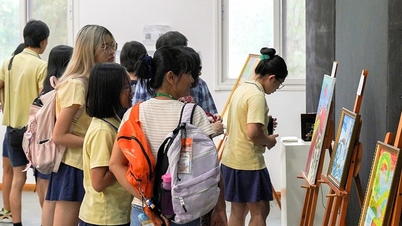












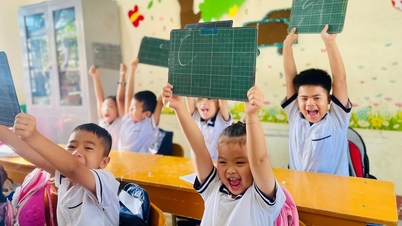

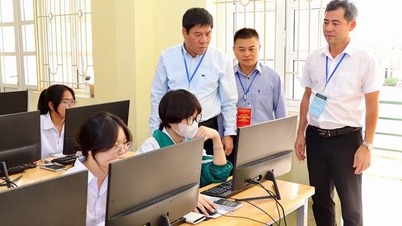




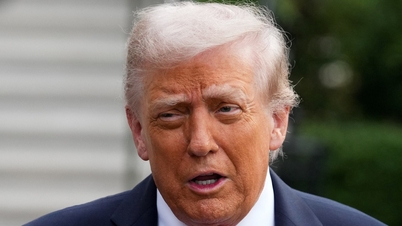


























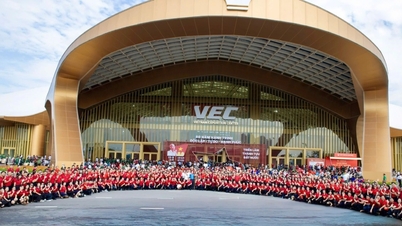










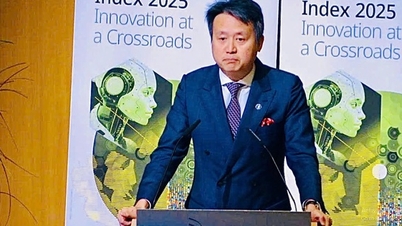

































Comment (0)